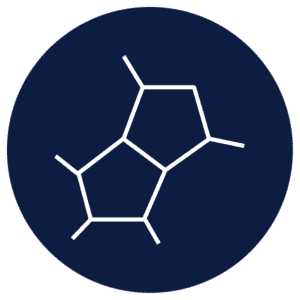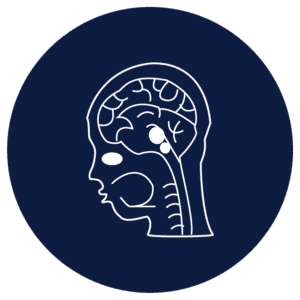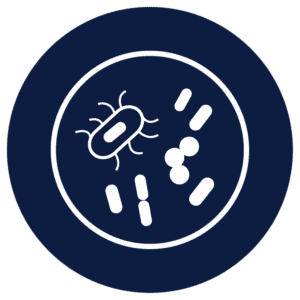Technology
Explore Biomedical Technology
Imaging
Molecular Imaging

Objective
Molecular Imaging enables the visualization of 3D structure and cellular function in living tissues. Quantitative, label free-molecular sensing and diagnostics with minimal perturbation are possible.
What do we do?
- MRI imaging
- fMRI
Applications
- Label-free imaging for biofabrication – personalized medicine
- Early cancer detection – in vivo diagnosis
- Drug discovery – assessing therapeutic response of precision medicine
Core BME Faculty
- Ariella Shikanov
- Xueding Wang
Functional & Physiological

Objective
Functional magnetic resonance imaging or functional MRI (fMRI) is a functional neuroimaging procedure using MRI technology that measures brain activity by detecting changes associated with blood flow.
What do we do?
- Ultrasound
- Photo acoustic
- Optical imaging
Applications
- Imaging and diagnosis of peripheral artery disease, abdominal aortic aneurysm, cardia function, and brain function
- Map neural activity of the brain and spinal cord
Core BME Faculty
- Carlos Aguilar
- C. Alberto Figueroa
- David Kohn
- Mary-Ann Mycek
- Douglas Noll
- David Nordsletten
- Ariella Shikanov
- Jan Stegemann
Computational
Multi-scale Modeling

Objective
To study processes that take place over multiple physical or temporal scales (e.g. organ vs tissue vs cell vs protein) and that influence each other’s function and performance.
What do we do?
- Molecular simulations
- Continuum mechanics
- Agent based modeling
Applications
- Cardiovascular disease research
- Medical device design and performance evaluation
- Image-based non invasive diagnostics
- Patient-specific planning of complex cardiovascular procedures
- Better diagnostics, based on relationships between multiple measured factors rather than individual factors
- New design of mult-combinatorial therapeutics based on systems-level properties
- Extremely low-cost, low-risk hypothesis-testing of drugs and other therapeutics
- Agent based modeling
Core BME Faculty
- Kelly Arnold
- Sriram Chandrasekaran
- C. Alberto Figueroa
- James Grotberg
- Scott Lempka
- Geeta Mehta
- Deepak Nagrath
- David Nordsletten
- David Sept
- Ariella Shikanov
- Jan Stegemann
Systems Biology

Objective
To take a holistic approach to biological research. It is an interdisciplinary field of study that aims to understand how interactions between many simple biological components can give rise to complex behaviors.
What do we do?
- Omics analysis
- Network modeling
- Metabolic flux analysis
Applications
- Regenerative medicine
- Cancer
- Immune dysfunction
Core BME Faculty
- Carlos Aguilar
- Kelly Arnold
- Sriram Chandrasekaran
- Ariella Shikanov
Cellular
3D Culture

Objective
An artificially created environment in which biological cells are permitted to grow or interact with their surroundings in all three dimensions.
Applications
- Functional tissue models to study development and disease
- Platforms to investigate how cells interact with chemical, physical, and mechanical aspects of their environment
- Tissue analogs to replace diseased or damaged tissue
Core BME Faculty
- Brendon Baker
- Rhima Coleman
- David Kohn
- Geeta Mehta
- Andrew Putnam
- Ariella Shikanov
- Jan Stegemann
Immuno-Therapeutics

Objective
Immunotherapy is the “treatment of disease by inducing, enhancing, or suppressing an immune response.” Faculty are engaged in applying nano-and biomaterial technologies toward modulating immune responses, as well as developing diagnostic and computational tools for the design of interventions.
What do we do?
- Immune actuation
- Immune tolerance
- Nano particles
- Cytokine and chemokine delivery
- Systems biology of the immune system
Applications
- Cancer (breast, prostate, pancreatic)
- Allergies (food, airway)
- Pulmonary disease (pulmonary fibrosis, COPD)
- Autoimmune disease (multiple sclerosis, type 1 diabetes)
- Infectious disease (HIV and other STIs, tuberculosis)
Core BME Faculty
- Kelly Arnold
- Brendon Baker
- Geeta Mehta
- Andrew Putnam
- Lonnie Shea
- Ariella Shikanov
- Jan Stegemann
Single Cell Analysis

Objective
Single-Cell analysis refers to the study of individual cells isolated from tissues in multi-cellular organisms. By studying one cell at a time, the results are certain to stem from that particular cell.
What do we do?
- Omics analysis
- Fluorescence and bioluminescence imaging
Applications
- Cancer
- Stem cell differentiation
- Tissue formation
- Autoimmune disease (multiple sclerosis, type 1 diabetes)
- Infectious Disease (HIV and other STIs, tuberculosis)
Core BME Faculty
- Carlos Aguilar
- Brendon Baker
- Geeta Mehta
- Ariella Shikanov
Gene and Drug Delivery

Objective
To deliver a pharmaceutical, protein, or nucleic acid to target safely in order to induce a therapeutic effect.
What do we do?
- Implantable biomedical scaffolds
- Injectable nano particles & micro particles
- Proteins, plasmids, viruses, small molecules
Applications
- Cancer/tumor treatment by targeting cancer cells
- Regenerative medicine: trophic factors can be made available that can promote the formation of functional tissues
- Autoimmune diseases/allergies – desensitize a patient to specific proteins or factors that induce an aberrant immune response
- Inflammatory diseases – modulate the trafficking of immune cells that can create inflammation following injury
Cardiovascular

Objective
A subset of BME’s cardiovascular engineering faculty seek to apply engineering tools and analyses to understand the design rules by which the cardiovascular system develops and functions. Others seek to exploit this type of fundamental understanding to create functional vessel replacements across length scales (i.e. from capillaries to large vessels) using cell and material-based strategies.
Applications
- Re-vascularization therapies for treatment of ischemic conditions
- Wound healing
- Vascularization of engineered tissues, especially bone and cardiac muscle
Core BME Faculty
- Kelly Arnold
- Brendon Baker
- C. Alberto Figueroa
- David Nordsletten
- Andrew Putnam
- Jan Stegemann
Cell Transplantations and Therapies

Objective
Cell transplantation and therapies seek to create and refine processes for cells to be introduced to the body in a controlled manner to direct function, regrow tissue, and fight disease. We have technologies for engineering the cells, as well as for engineering the environment to maximize engraftment and function.
What do we do?
- Cell survival and engraftment
- Directed differentiation
- Immune modulation
- Hydrogels and microporous scaffolds
Applications
- Stem-cell therapies (cancer, diabetes)
- Spinal cord injury
- Fertility preservation
- Revascularization of tissues and organs
- Cartilage/bone regeneration and replacement
Core BME Faculty
- Carlos Aguilar
- Kelly Arnold
- Brendon Baker
- Rhima Coleman
- David Kohn
- Geeta Mehta
- Lonnie Shea
- Ariella Shikanov
- Jan Stegemann
Devices
Molecular, Cellular, & Tissue Diagnostics

Objective
Technologies to analyze biological and chemical markers (genome, proteome, metabolome) in the human body (liquid biopsy, tissue biopsy, breath). Also, technologies for the capture of rare cell types that are causing or related to disease.
What do we do?
- Molecular analysis of blood, tissue, breath, and sweat
- In vivo capture of disease or related cells
- In vivo probes of diseased tissues
Applications
These techniques are used for early disease detection that can guide therapy or monitor chronic diseases.
- Chronic disease like diabetes
- Cancer: early detection of metastic disease
- Autoimmune disease
Core BME Faculty
- Xudong (Sherman) Fan
- Geeta Mehta
Histotripsy

Objective
Histotripsy controls cavitation to fractionate the target tissue into cellular debris with millimeter accuracy using microsecond, high-pressure ultrasound pulses.
Applications
- Image-guided non/minimally invasive surgery
- Cancer/tumor reduction/removal (liver, prostate, kidney, pancreas, etc.)
- Venous thrombosis/artery plaque removal/ alternate to stent
- Brain applications (brain tumors, stroke, neural stimulation)
Core BME Faculty
- Timothy Hall
- Zhen Xu
Neural Interfaces

Objective
Neural Engineering encompasses techniques to interface with and study the nervous system, towards developing devices and treatments to map, assist, augment, and/or repair a wide variety of conditions. Our approaches include placing and modeling the effects of electrodes in or on the brain, retina, spinal cord, and peripheral nerves.
Applications
- Controlling prosthetic limbs
- Restoring vision
- Reducing or eliminating chronic pain
- Restoring bladder function
Core BME Faculty
- Tim Bruns
- Cindy Chestek
- Scott Lempka
- James Weiland